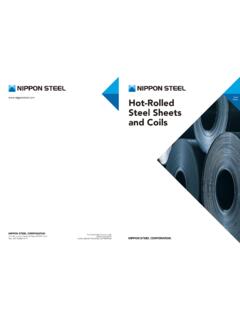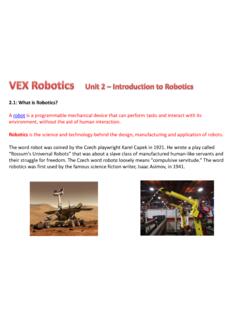Transcription of TOYOTA PRODUCTION SYSTEM BASIC HANDBOOK
1 TOYOTA PRODUCTION SYSTEM . BASIC HANDBOOK . TABLE OF CONTENTS. Introduction & History of the TOYOTA PRODUCTION SYSTEM .. 3. Goals of the TOYOTA PRODUCTION SYSTEM .. 4. TPS Model Respect for People .. 7. Focus Areas of TPS .. 8. Eliminating Quality ..11-12. Cost.. 13. 14. Safety & Morale .. 15. Jidoka ..16-18. Standardization .19. Just in Time .. 20. Pull PRODUCTION ..21. Kanban ..22-23. Level 24. Takt Time.. 25. Flow Equipment Reliability .. 29. Summary .. 30. Definition of Terms..31-32. TPS HANDBOOK 2. Art of Lean, Inc. INTRODUCTION. This HANDBOOK is intended to function as a simple guide that introduces key concepts related to the TOYOTA PRODUCTION SYSTEM . It is not intended as a complete reference manual or an implementation guide.
2 The contents described within are merely provided to summarize the more familiar elements of the SYSTEM in a concise manner. If you are looking for a more complete summary of the SYSTEM then there are several published works that attempt to go into greater detail. Examples of summary works include TOYOTA PRODUCTION SYSTEM by Yasuhiro Monden, A Study of the TOYOTA PRODUCTION SYSTEM from an Industrial Engineering Viewpoint by Shigeo Shingo, TOYOTA PRODUCTION SYSTEM : Beyond Large Scale PRODUCTION by Taiichi Ohno, and more recently, The TOYOTA Way and the accompanying field book by Jeff Liker. BRIEF HISTORY OF THE TOYOTA PRODUCTION SYSTEM . The TOYOTA PRODUCTION SYSTEM (TPS) arose out of necessity in response to the circumstances surrounding the company.
3 Many of the foundational concepts are old and unique to TOYOTA while others have their roots in more traditional sources. The oldest part of the PRODUCTION SYSTEM is the concept of Jidoka which was created in 1902 by Toyoda founder Sakichi Toyoda. This concept pertains to notion of building in quality at the PRODUCTION process as well as enabling separation of man and machine for multi-process handling. The origins of this notion began in the Toyoda Spinning and Weaving company which was started by Sakichi Toyoda. Sakichi invented a loom that automatically stopped whenever it detected that a thread was broken. This stopped the process from created defective material. Later on in 1924 he created an automatic loom that allowed one person to operate multiple machines.
4 The rights to manufacture the loom outside of Japan for were eventually sold to the Platt Brothers Ltd. in England. This money was then partially used to start an automotive division that was later spun off in 1937 as a separate business and company under Kiichiro Toyoda the son of Sakichi. The most famous element of the TPS is no doubt the Just-in-Time pillar of the PRODUCTION SYSTEM . The phrase Just-in-Time was coined by Kiichiro TOYOTA in 1937 after the start of TOYOTA Motor Corporation. The company was quite poor and could not afford to waste money on excess equipment or materials in PRODUCTION . Everything was expected to be procured just in time and not too early or too late. Later elements developed in the 1950's including takt time, standardized work, kanban, and supermarkets added to the basis for JIT.
5 After World War II Taiichi Ohno a promising engineer in the Toyoda Spinning and Weaving Corporation was brought over to the automotive side of the business. He was given the task of improving operational productivity and driving in the concepts of Just-In-Time and Jidoka. He was eventually appointed machine shop manager of an engine plant and experimented with many concepts in PRODUCTION between the years of 1945-1955. His work and effort is largely what TPS HANDBOOK 3. Art of Lean, Inc. resulted in the formulation of what is now acknowledged as the TOYOTA PRODUCTION SYSTEM . There are numerous other people inside the company that contributed to the overall development of the company and the PRODUCTION SYSTEM .
6 There are also many other tools and techniques that were developed in TOYOTA such as 7 Wastes, Standardized Work, 5S, SMED, Visual Control, Error Proofing, as well as many others. The concepts will be explained in the latter sections of this HANDBOOK . Other influences such as Henry Ford, Fredrick Taylor, and Dr. W. Edwards Demming are outside the scope of this short document. TPS HANDBOOK 4. Art of Lean, Inc. GOALS OF TPS. The goal of the TOYOTA PRODUCTION SYSTEM is to provide products at world class quality levels to meet the expectations of customers, and to be a model of corporate responsibility within industry and the surrounding community. The TOYOTA PRODUCTION SYSTEM historically has had four BASIC aims that are consistent with these values and objectives: The four goals are as follows: 1.
7 Provide world class quality and service to the customer. 2. Develop each employee's potential, based on mutual respect, trust and cooperation. 3. Reduce cost through the elimination of waste and maximize profit 4. Develop flexible PRODUCTION standards based on market demand. The graphic presented below models the TOYOTA PRODUCTION SYSTEM . The purpose of this document is to describe the major sub-systems that comprise TPS, as well as explain the key concepts and tools associated with the SYSTEM . TPS HANDBOOK 5. Art of Lean, Inc. THE TOYOTA PRODUCTION SYSTEM MODEL. The PRODUCTION SYSTEM philosophy of TOYOTA embodies a manufacturing culture of continuous improvement based on setting standards aimed at eliminating waste through participation of all employees.
8 The goal of the SYSTEM is to reduce the timeline from the time an order is received until the time it is delivered to the actual customer. Ideally the SYSTEM strives to produce the highest possible quality, at the lowest possible cost, with the shortest lead-time possible. There are two primary pillars of the SYSTEM . The first and most famous pillar of the SYSTEM is Just In Time (JIT). The JIT concepts aims to produce and deliver the right parts, in the right amount, at the right time using the minimum necessary resources. This SYSTEM reduces inventory, and strives to prevents both early and over PRODUCTION . Producing in a JIT fashion exposes problems quickly. With less inventory in a SYSTEM the rocks are quickly exposed in PRODUCTION that are disrupting flow.
9 Most companies shy away problems and use inventory to hide these problem and avoid potential disruptions. In TOYOTA however the opposite logic is applied. By reducing inventory you expose the real problems in a PRODUCTION process quickly and focus need for improvement. This notion of surfacing problems and abnormalities is a critical concept in TPS. Of course unless you can solve the problem that you expose there is a danger to this approach. There are several important components to TPS: takt time, flow PRODUCTION , pull via kanban, and leveling (heijunka). These items will be describe in more detail later in this HANDBOOK . Jidoka (Build in quality) is the second pillar of the SYSTEM . There are two parts to Jidoka.
10 1) Building in quality at the process and 2) Enabling separation of man from machine in work environments. Jidoka is a Japanese work that ordinarily mean automatic or automation. However TOYOTA puts a specific twist on this word by adding a what is known as a radical in depicting kanji characters. The radical added to the left of one of the kanji characters in Jidoka means human . In other words TPS aspires for processes that are capable of making intelligent decisions and shutting down automatically at the first sign of an abnormal condition such as a defect, or other problem. The goal is not to run continuously but in other words to stop running automatically when trouble arises. This automatic stop function helps stop defects from escaping downstream, prevents injury, limits machine damage, and enables a better look at the current condition when ever there is a problem.





